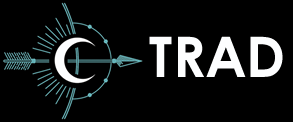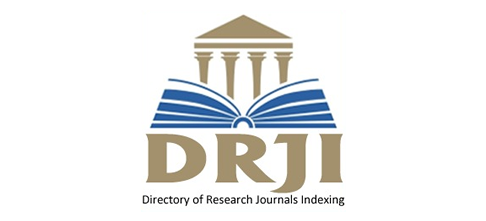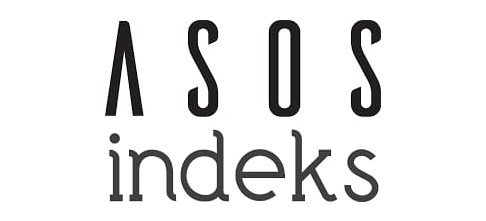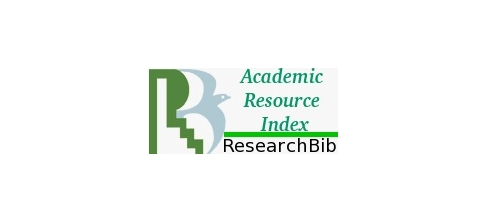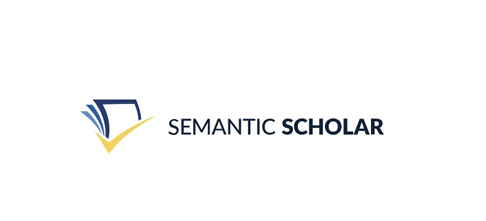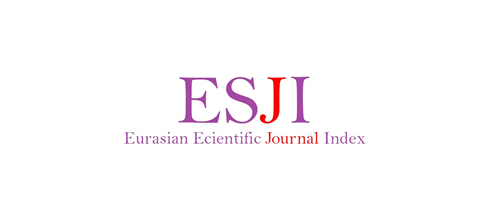Genel Esaslar
Terörizm ve Radikalleşme ile Mücadele Araştırmaları Dergisi TRAD'a gönderilecek makaleler, çalışılan konuya yeni bir boyut getirecek şekilde özgün ve daha önce hiçbir yayın organında yayımlanmamış (farklı dillerde dahil) veya aynı anda değerlendirilmek üzere gönderilmemiş olmalıdır. Terörizm ve Radikalleşme ile Mücadele Araştırmaları Dergisine gönderilen makaleler için ücret talep edilmez.
Bununla birlikte, daha önce yayımlanmış ancak güncellenmiş, geliştirilmiş makaleler de gönderilebilir. Bu tür makalelerin telif hakkı talebi ilgili kuruluştan yazar tarafından alınır.
Terörizm ve Radikalleşme ile Mücadele Araştırmaları Dergisine gönderilecek çalışmaların içeriği şu sıraya uygun olmalıdır. Çalışmanın başlığı, özet, abstract, anahtar kelimeler, giriş, yöntem, sonuçlar, tartışma, kaynakça, ekler.
Kelime sınırı
Dergiye gönderilecek makaleler, dipnotlar ve kaynakça dâhil en az 4.000 en fazla 10.000 kelime olmalıdır. Kitap analizleri ise 2.500-4.000 kelime olacak şekilde hazırlanmalıdır.
Yazar Bilgileri
Bildiri özeti başlığından bir sonraki satıra sola yaslı şekilde yazarın adı ve soyadı yazılmalı, soyadının bitimine (*) işareti konulmalıdır. İlk sayfanın sonuna ise, eğer dipnot bulunuyorsa birinci dipnotun öncesine, yazarın unvanı, kurumu, elektronik posta adresi ve ORCID numarası (*) işaretinin ardına dipnot şeklinde, 8 punto ile yazılmalıdır.
Örnek: Dr.Öğr.Üyesi, Hacettepe Üniversitesi Siyaset Bilimi ve Kamu Yönetimi Bölümü, erhaankara@gmail.org, ORCID: 0XX0-00XX-3XX5-2XX8
Özet - Abstract
ÖZET ve ABSTRACT başlıkları, hepsi büyük harflerle Times New Roman, 11 punto yazılmış şekilde (ÖZET / ABSTRACT şeklinde) sayfaya ortalanmış olmalıdır. Özet ve Abstract bölümlerinin içeriği 200 kelimeyi aşmayacak şekilde Times New Roman ve 9 punto, önce ve sonra 6nk ve birden çok, 1,15 satır aralığında yazılmalıdır.
Özet ve Abstract bölümünün ardından, Times New Roman, 9 punto ve italik olarak, en az 5 en çok 7 anahtar kelime yazılmalıdır.
Özet ve Abstract da çalışmanın amacı, yöntemi, varsayımı ve sonucu kısaca belirtilmelidir. İngilizce çalışmalarda önce İngilizce “Abstract”, Türkçe çalışmalarda ise önce Türkçe “Özet” yazılmalıdır.
Sayfa Düzeni
Makale metinleri Microsoft Word programında, Times New Roman 11 punto, önce ve sonra 6nk ve birden çok, 1,15 satır aralığında yazılmalıdır.
Kenar boşlukları sağ: 2,5 cm, sol: 2,5 cm, alt: 2,5 cm, üst: 2,5 cm, kâğıt ölçüsü A4 olacak şekilde hazırlanmalıdır. Üst ve alt bilgi 2,5 cm olmalıdır. Sağ ve sol girintiler 0 olarak ayarlanmalıdır.
Hizalama iki yana yaslı olmalı, satır/paragraf başları için 0,5 cm boşluk bırakılmalıdır.
Yazı Başlığı
Yazı başlığınız (Türkçe ve İngilizce) Times New Roman 11 punto, koyu (bold) ve sayfaya ortalanmış olmalı, kelimelerin tüm harfleri büyük olmalıdır. İngilizce başlık İngilizce özetten (abstract) önce yazılmalıdır. Başlığın hemen altına sağa yaslı olacak şekilde, bold yazı tipinde, yazarın adı (küçük harflerle) ve soyadı (BÜYÜK HARFLERLE) yazılmalıdır.
Başlıklar
Makaleler için en fazla beş alt başlık sistemi kullanılmalıdır. Başlıklar sola yaslanmış olmalıdır. Birinci derece ana bölüm başlıklarının, büyük harf ve koyu olarak yazılmalıdır. İkinci derece alt bölüm başlıkları koyu ve her kelimenin ilk harfi büyük olarak yazılmalıdır. Üçüncü derece başlıklar koyu, italik ve her kelimenin ilk harfi büyük olarak yazılmalıdır. Dördüncü derece başlıklar, 11 punto ve yalnızca birinci sözcüğün ilk harfi büyük olarak yazılmalıdır. Beşinci derece başlıklarda birinci sözcüğün ilk harfi büyük ve italik olarak yazılmalıdır.
Örnek;
1. KAVRAMSAL ÇERÇEVE
1.1. Terör ve Terörizm
1.1.1. Terörizmin Çeşitleri
1.1.1.1. Etnik terörizm
1.1.1.1.1. Etnik terörizmle mücadele yöntemleri
GİRİŞ, SONUÇ ve KAYNAKÇA başlıklarına numara verilmez ve sola yaslanarak yazılır.
Dipnotlar
Dipnotlar Times New Roman 8 punto, önce ve sonra 6nk ve birden çok, 1,15 satır aralığında yazılmalıdır. Dipnot gösterimi için 1, 2, 3 şeklinde rakamlar kullanılmalıdır. Dipnot metninde alıntı yapılmış ya da bir esere atıfta bulunulmuş ise aynı dipnotta kaynakça gösterilmelidir.
Tablo ve Şekiller
Her tablo ve şekil için sıralama numarası verilmeli (Tablo 1., Şekil 1. vb.) tablo ve şekillerin başlığı üstte bulunmalı, ortalanmış ve ilk harfleri büyük olacak şekilde, 10 puntoda yazılmalı, başlık ile tablo ve şekil arasındaki boşluk 1 satır aralığı olmalıdır. Tablo, şekil ve grafiklere ilişkin kaynaklar; ilgili tablo, şekil veya grafiğin başlığının devamına (Kaynak:) yazılmalıdır. Tablo ve şekil içeriği Times New Roman 9 punto olarak yapılandırılmalıdır (Sayfa durumuna göre 8 punto da kullanılabilir). İstatistikler için virgülden sonra üç haneden fazlası yazılmamalıdır.
Kısaltmalar
Kısaltmalar metin içerisinde ilk kullanıldığında önce açık hali ve parantez içerisinde kısaltma yazılmalı, metnin devam eden bölümlerinde açık hali değil sadece kısaltma kullanılmalıdır.
Örnek: Türkiye Büyük Millet Meclisi (TBMM).
Atıf ve Göndermelere İlişkin Esaslar
- Atıflar American Psychological Association (APA) son sürümüne göre düzenlenmelidir. Atıfta bulunulan eserler kaynakçada alfabetik sıra ile sıralanmalıdır. Atıf kuralları için lütfen tıklayınız.
- Metin içinde yapılacak atıflar ayraç içinde gösterilecektir. Kaynakça da bu atıf sistemine uygun olarak hazırlanacaktır. Aşağıda farklı nitelikteki kaynaklara yapılan atıf örnekleri gösterilmiştir:
- Baysal (1992) örgütün başlıca faaliyetleri ise manastırlarını tahrip etmek, borçların geri alınmasını önlemek için tefecilerin………………… (s. 1).
- Tarihsel bakış açısının yanı sıra politik şiddetlerini ve kendilerini meşrulaştırma adına ……………….. (Baysal, 1982, s.19).
- Özcan’ın 2004’te yaptığı çalışmaya göre ………………………………. (s. 14).
- Radikalleşmenin günümüzde bu derece önemli bir düzeye ulaşmasının açıklanmasında akademisyenler (Birhan ve Karmer, 1996, s.45; Tarhun, 2005a, ss.31-35; Erkin, 2001, s. 44) gibi faktörlerden…………………………………………………………….
- More ve Ash (1982, s.898) tarafından ortaya konulan……………………….…
- Metin içerisinde alıntı yapılan sayfa numarasını belirtmek için yazar adı ve eser yılının ardından tek sayfa için s., daha fazla sayfa için ss. ifadesi kullanılmalıdır.
(Özgül, 1988, s. 19) ya da (Özgül, 1988, ss. 195–204).
- Aynı yazar veya yazarların farklı çalışmalarında, çalışma tarihi daha eski olan önce yazılmalıdır. Aynı yazarın veya yazarların aynı tarihlerdeki çalışmalarında “a”, “b” şeklinde harfler, çalışmanın yapıldığı yılın yanına yazılmalıdır.
- Bir yazarın düşüncelerinin yeniden ifade edilmesi zorsa veya anlamını yitirecekse 40 kelimeden daha fazla olmayan atıflarda kaynaktan alınan ifade tırnak işareti içinde belirtilerek yazılmalı ve o ifadenin bulunduğu sayfanın numarası belirtilmelidir. Örneğin: (Özen, 2009, s. 17).
- 40 kelimeden daha fazla doğrudan birebir alıntı yapılması gerekiyorsa alıntı yapılan kısım, sağdan ve soldan 1 cm. içeriden, tırnak içinde 10 punto olarak yazılmalı, en sonuna alıntı yapıldığı yerdeki paragraf (para. 5) veya sayfa numarası (s. 85) belirtilmelidir.
- Yazar ismi belirtilmemiş bir çalışmaya atıf yapılması gerekiyorsa ve bu çalışma süreli bir yayındaysa yayının ismi, yazar olarak belirtilebilir. Örnek: (Adalet Bakanlığı, 1999).
- Aynı parantez içinde birden fazla çalışmaya atıf yapılacaksa çalışmalar alfabetik sıraya göre ve aralarına noktalı virgül konularak yazılmalıdır. Örnek: (Bural, 2010; Başaran ve Erkmen, 1989).
- İkincil kaynaklar, (Bural, 1994’ten akt. Baki, 2003).
Ardıç’ın (2013), Yalçınkaya’dan (1994) aktardığına göre ………………............ şeklinde ifade edilerek ikincil kaynaklardan atıf yapıldığı belirtilmelidir.
Kaynakça Yazımı Esasları
- Kaynakça 11 punto olarak, önce ve sonra 6nk ve 1 satır aralığında ve soyadı alfabetik sırasına göre düzenlenecektir.
- Kaynakça ikinci satırdan itibaren 0,5 cm içeride olacak şekilde ayarlanmalıdır.
- Kaynakçada, kitaplarda sayfa numaraları belirtilmeyecek, makalelerde derginin ilgili sayfa aralığı belirtilecektir.
- İnternet kaynaklarında erişim tarihi mutlaka belirtilecektir.
- Kaynakça ile ilgili ayrıntılı hususlar için APA’nın (American Physchology Association) bilimsel yazı kriterlerine, Publication Manual of American Psychological Association veya Dergi Park Yazım Kuralları’na bakınız.
https://apastyle.apa.org/products/publication-manual-7th-edition
https://dergipark.org.tr/tr/download/article-file/157267
- Kaynakçada yazar sadece soyadının baş harfi büyük, adının ise ilk harfi olacak şekilde aşağıda verilen örneklerde olduğu şekilde yazılacaktır.
- DOI numarası mevcutsa referansın en son kısmına eklenecektir.
Tek yazarlı kitap
Tunalı, V. (2016). Sosyal ağ analizine giriş. Nobel Yayıncılık.
İki yazarlı kitap
Beyit, S. ve Vancı, P. (2018). Dünyada yöneticilik. (Ü. Şensoy, Çev.) İş Bankası Yayınları.
Editörlü kitap
Tripathy, B.K., Sooraj, T.R. ve Mohanty, R.K. (2018). Big data techniques in social network analysis. Panda, M., Abraham, A. ve Hassanien, A.E. (Ed.). Big data analytics: A social network approach içinde. (ss.47-67). CRC Press.
İnternet sayfası
McFadden, C. (02 Temmuz 2020). A chronological history of social media. Erişim tarihi: 11 Nisan 2021. https://interestingengineering.com/a-chronological-history-of-social-media.
Makale
McIntyre, K. E. (2014). The evolution of social media from 1969 to 2013: A change in competition and a trend toward complementary, niche sites. The Journal of Social Media in Society, 3(2): 5-25.
Elektronik Makale
Morris, D.R. (2009). Surprise and terrorism: A conceptual framework. Journal of Strategic Studies, 32(1): 1-27. https://doi.org/10.5703/1288284316979.
Ansiklopedi
Andaç, O. (1985). Meydan Larousse Ansiklopedisi içinde (c. 2, ss.125-135). Neşriyat Yayınları.
YouTube Video
MSB. (7 Mart 2021). Eğitim ve öğretim [Video]. Youtube. https://www.youtube.com/watch?v=9_5wHw6l11o
Kişisel görüşme
Nihat Ali Özcan, Ankara, 10 Ekim 2019, kişisel görüşme.
Yazarlı Gazete Yazısı
Sedat Ergin (23 Eylül 2020). Dışişleri Bakanı’ndan Mısır’a sıcak mesajlar var, Hürriyet.
Yazarı Belli Olmayan Gazete Yazısı
NTV. (23 Eylül 2020). AB dışişleri bakanları Belarus yaptırımlarında anlaşamadı.
Yazarı Belli Olmayan Raporlar, Sonuç Bildirileri vb.
The Berlin Conference on Libya Conference Conclusions, Berlin, 19 Ocak 2020.
Yayımlanmamış Çalışmalar
Ahlat, C. (2020). Uluslararası siyaset. (Yayımlanmamış Doktora Tezi). Gazi Üniversitesi, Ankara.
Kongre Bildirileri
Semih, G. ve Akçalı, U. (2011). Türkiye’de terörizm. Kantar, G. (Ed.), 1.Uluslararası Terörizmle Mücadele Kongresi bildiriler kitabı içinde (ss. 110-114). İstanbul: ASOS. doi:10.21733789654781.445

